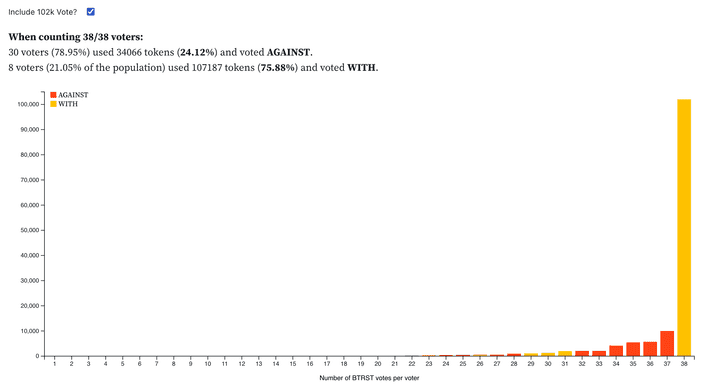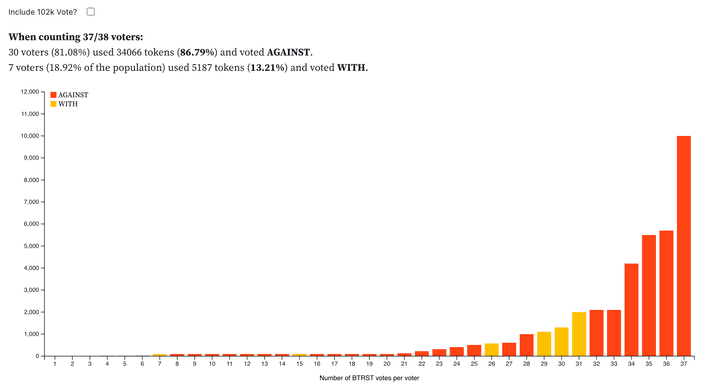It sounds fair in principle, the more a person has financially invested in a network, the more control they have.
But I have to question the idea that "everyone can vote" in a system when it perhaps becomes meaningless. How does this play out in larger democratic systems? In a N dollar to 1 vote system, hundreds of thousands of voters can be overruled by a single voter who is better economically equipped.
The rules state that one BTRST token equals one vote, a person who is more invested financially has more voting power, but when 75% of the voting population perhaps feels disgruntled with the outcome, how can that be resolved and considered fair.
The two charts below are constructed from the same dataset (taken from Snapshot), with a single 102k BTRST vote removed from the second chart, you can see we have a very different vote outcome.
The visualization is interactive and can be found on Observable. You are welcome to review my code, math, data, and can even fork it, add to it or remix it. As always, if you have any feedback or comments, please drop them in the comment section below, and I will get back to you.

38 voters - voted 75.88% WITH vs 24.12% AGAINST using BTRST tokens

37 voters - voted 13.21% WITH vs 86.79% AGAINST using BTRST tokens
Note: I would like to point out that this is not a final vote but more of a temperature check, this was an off-chain vote that decided additional time should be invested by the Braintrust community to plan a full proposal which will then go to a final on-chain vote.
I wanted to visualize how that single vote affected the proposal's outcome, and it led me to consider that perhaps a decentralized voting systems need to implement additional rules when using a N dollar to 1 vote system.
An example change could be that a single voters vote can never be more than twice as large as the next largest vote. Of course, a voter could place as many tokens as they wish as votes, but you could then restrict the size of that large vote at the last moment.
Admittedly, my initial suggestion is likely not the best approach. However, I would love to hear other people's insights in tackling this problem, if it is, in fact, even a "problem"?
That's a Wrap!
Now, for me, where it gets exciting.... This proposal means the population of possibly disgruntled voters will now be asked to implement the outcome of a decision that they did not vote for. I am interested to see how this plays out.